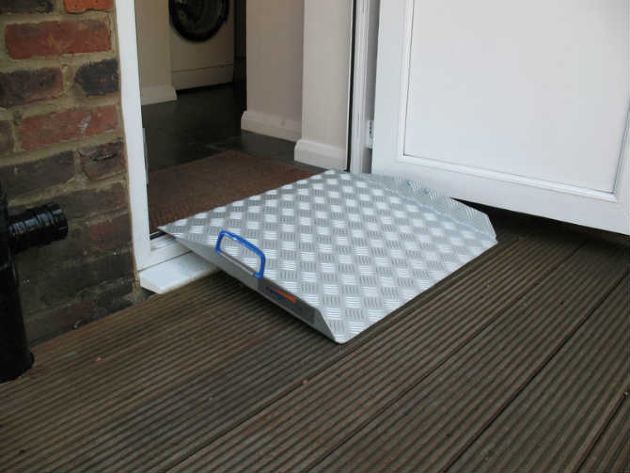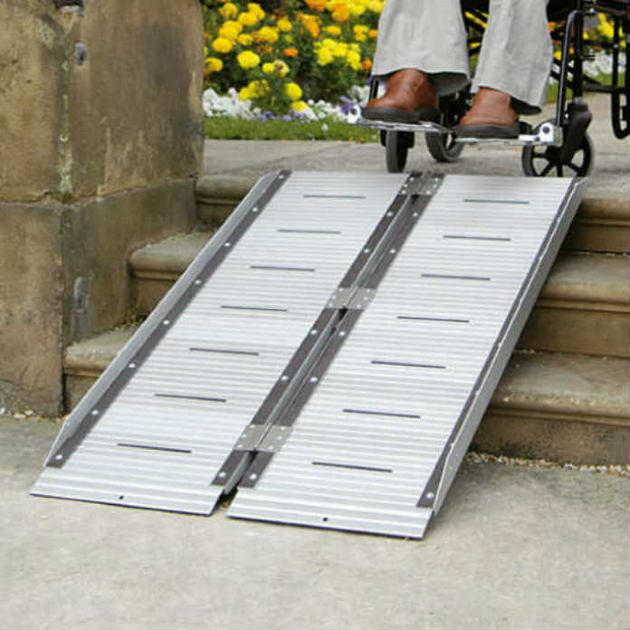How to Choose the Right Disability Ramp
Becoming a quadriplegic can be restrictive for a person in so many ways. Besides dealing with trauma, these people need to face the obstacles and tasks of everyday life while living in a wheelchair. However, at some point, most people decide to accept their condition and the reality of life. We are all witnesses of people who live with some form of disability but they still managed to accomplish so much in life, even much more than most able-bodied people.
Technology has come up with so many useful devices that can make their lives easier. Wheelchair ramps are just some of the many. In this article, we’ll cover this topic specifically and explore the many different types of disability ramps available on the market and consider the important factors you need to pay attention to when shopping for one.
How a Ramp Can Make a Difference for People with Disabilities?
Ramps are considered essential pieces of equipment which allows wheelchairs users, as well as people pushing strollers, carts or other wheeled objects to move around more easily or navigate between areas of different height. These ramps need to be carefully designed in order to be useful. Therefore there are different designs of ramps that meet certain needs and requirements.

Types of Ramps for People with Disabilities
Wheelchair Ramps for Stairs
Stairs are considered one of the most troublesome obstacles when it comes to mobility and navigating around safely for wheelchair users. Not being able to navigate your home safely can severely hinder your ability to get out of your home when you want or need to. Independence and freedom are what all people with disabilities are striving to achieve. Therefore installing a wheelchair disability ramp for stairs can make a huge difference for wheelchair users.
There are also portable handicap ramps which are very popular mostly due to the fact that they are fairly inexpensive and can be moved wherever needed. They are usually made out of aluminium and can be found in a variety of lengths, widths, and stowing configurations.
Threshold Ramps
If you have a doorway or landing that is slightly raised, threshold ramps are the perfect solution. They feature a sturdy, slightly inclined platform that enables you to cross over raised landing, curbs, and doorways. These types of ramps are great for indoor and outdoor applications in residential or commercial areas.
Suitcase Ramps
This type of ramp can be used as one unit or it can be separated into two lightweight sections, which makes it even more convenient for usage. Its innovative design and high-quality construction provide all the safety and strength required for disabled people irrespective of their age, mobility, and disability. They are ideal for scooters and all wheelchair users, as their design allows them to easily bridge the gaps over steps, curbs, and raised landings.
Modular Ramp
This type of ramp is specially designed to fit into any home or business setting. Meeting all ADA codes, they can be also custom ordered available in a variety of different configurations to meet your exact needs. These types of ramps aren’t portable but they can be disassembled and moved when needed.
Telescopic Ramp
The telescopic ramps are constructed from lightweight, durable materials that are very easy to be manoeuvred and positioned into tight spaces when needed. They provide easy and convenient access to houses, cars, and navigating areas when a change in level is required, so you can make your travel faster, safer, and more comfortable.

What to Look for When choosing a Disability Ramp
There are some key factors you need to take into consideration when you decide to invest in a wheelchair ramp that will best suit your needs. The most important ones include the size, material, budget, and the type of ramp you prefer.
Material
Choosing the right kind of material when shopping for a wheelchair ramp can make all the difference. So far, aluminium is the most widely used material for the construction of wheelchair ramps. It’s easy to install, durable, quite affordable, and requires little maintenance than most materials. Besides, it can withstand different weather conditions and is perfect for permanent or temporary installations as it’s easy to be disassembled.
Concrete ramps on the other hand are quite expensive and difficult to install, therefore they’re not so much recommended. The most visually appealing of all is wood ramps, however, they have their drawbacks as wood requires more maintenance than other types of materials to prevent rotting and warping.
Budget
Depending on your budget and how much you are willing to spend you can choose a material that best suits your needs. For instance, you can spend less on wood ramps as they are much more affordable options than steel, aluminium, or concrete.
Maintenance
Of all the materials used in the making of ramps, wood requires the most maintenance. Therefore most people opt for materials that don’t require regular maintenance and don’t easily lose their quality over time.
Size
Determining the correct size of your ramp is yet another important factor. For this, you need to consider both the size of your wheelchair and the additional space needed to navigate the ramp. The estimated minimum clear width of the wheelchair should be 90cm, which often means that the application must be at least 105 cm wide to allow enough space for movement.
Type
And finally, choosing the right type is obviously very important. Wheelchairs ramps are the more common choices for disabled people or for those who just started using one. It’s also important to consider whether you actually need a permanent ramp or one for a short period of time. If it’s intended only for a limited period, then perhaps the modular type of ramp can be a great deal for you.



